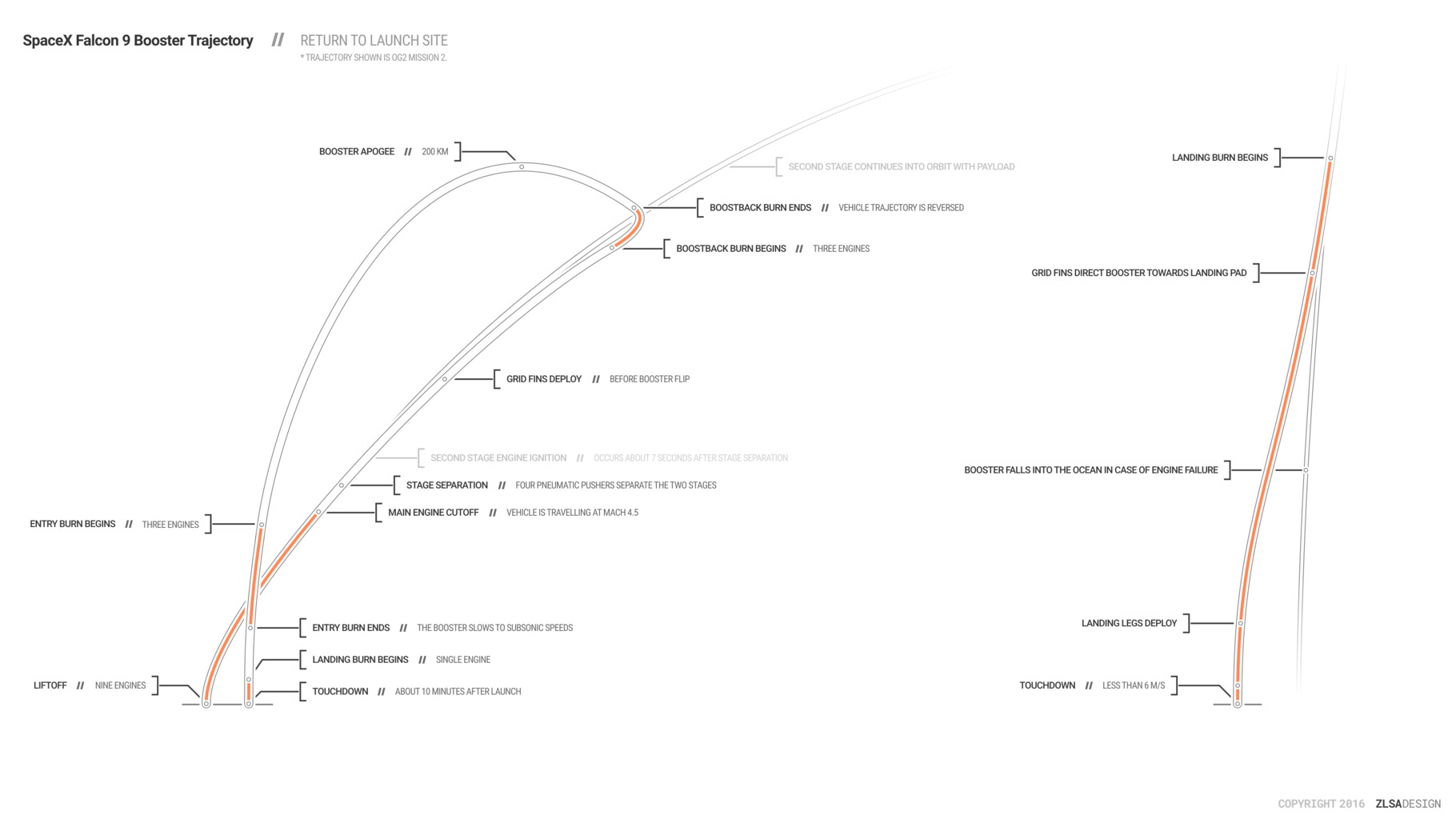infographic SpaceX Falcon 9 Return to Launch Site ~2 minute read

This is the approximate trajectory of the SpaceX Falcon 9 booster during a “return to launch site” landing (i.e. landing on land).
- The Falcon 9 launches, as normal.
- After stage separation, the second stage engine ignites to continue its trip into orbit. The booster stage flips around using its RCS thrusters and deploys its grid fins.
- The Falcon 9 booster performs a long boostback burn, bringing its IIP to the vicinity of the launch site.
- At about 70km in altitude, the booster ignites three of its nine engines for its entry burn. The entry burn ends at about 40km. The entry burn slows down the booster to prevent aerodynamic damage as it begins to pass through the atmosphere.
- The grid fins constantly control the trajectory of the booster, directing it towards the landing pad.
- At about 8km in altitude, the landing burn begins. So far, every RTLS landing has used only a single engine.
- Seconds before touchdown, the four landing legs deploy.
- The booster touches down on land; the RCS thrusters at the top of the booster help stabilize the vehicle. Soon afterwards, unused LOx is vented; the RP-1 (kerosene) propellant remains in the tank.
Sources
The trajectory of the SpaceX Falcon 9 booster in this infographic is based on Flight Club’s recreation of the Orbcomm OG2 Mission 2 launch trajectory.
This infographic was created by Jon Ross. Contact me if you'd like to use it anywhere.

